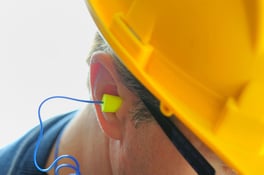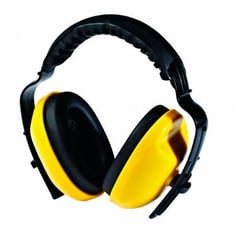Hearing Protection Safety
Hearing is one of our treasured senses that we depend on every day to do our jobs better. On the farm, it’s our hearing we use to diagnose those subtle, but significant mechanical problems or detect a bad electrical contact. It’s our hearing that detects one ailing animal in an active livestock barn. In many cases our hearing is a difference maker by detecting something early before it can go wrong. Problem is that we don’t treat our hearing as requiring life-long preservation. Because significant pain is rarely associated with hearing loss, we don’t sense any immediate harm. Therefore we are not as apt to think about hearing protection or loss…..until it’s too late.
Hearing Facts & Myths
- There is no way to build up resistance to loud noises. Excess noise damages the cells and nerves and neither can be repaired or replaced. More exposure results in more damage and not resistance.
- Noise becomes damaging at around 85 decibels and painful noise doesn’t come into play till about 140 decibels. Noise doesn’t have to be painful to cause damage, it starts much earlier at around 85 dB and is dangerous above that level.
- Short exposures to loud noises is damaging. When noise is loud enough, it damages hearing instantly as well as many short exposures to loud noises add up over time to have an accumulative effect similar to continuous exposure.
- Once hearing is damaged it is permanent. Contrary to beliefs that hearing will heal and return.
- Hearing never returns to normal. Believing that if your hearing ever gets bad, you can wear hearing aids to restore your hearing to normal is a myth. Hearing aids will help restore your ability to hear conversations and experience sounds around you. But they won’t sound normal. They are "NOT" like your eyeglasses, where wearing glasses can correct your eyesight.
PPE – Personal Protective Equipment
Ear muffs and ear plugs are the most widely used personal protective equipment to reduce noise levels. PPE is measured according to its noise reducing rating or NRR. The NRR rating indicates the reduction in decibels when PPE is properly used. Hearing protection should have a noise reduction rating of at least 25 decibels. This reduction typically gets users back to a safe zone (example: 100 dB noise – 25 dB hearing protection = 75 db safe zone). Whether you choose earplugs or ear muffs it’s important to remember that hearing protection needs to be used whenever you are exposed to loud noises. Keep some form of hearing protection relatively close by so they are always accessible.



